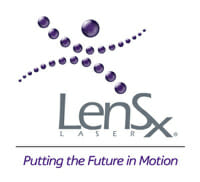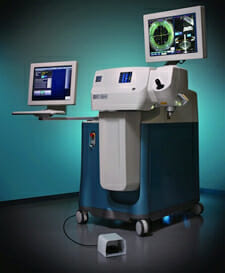 Cataract surgery has evolved over many years, resulting in improved safety, efficiency, and visual outcome. Years ago, cataract surgery was performed manually with a large incision in the eye through which the whole cataract was removed. Since the 1990s, phacoemulsification has become the cataract procedure of choice; this method uses a small self-sealing incision and ultrasound to break up and remove the cataract within the eye.
Cataract surgery has evolved over many years, resulting in improved safety, efficiency, and visual outcome. Years ago, cataract surgery was performed manually with a large incision in the eye through which the whole cataract was removed. Since the 1990s, phacoemulsification has become the cataract procedure of choice; this method uses a small self-sealing incision and ultrasound to break up and remove the cataract within the eye.
Recently, you may have heard about “laser cataract surgery” in the media or from others. This is the latest technology in the evolution of cataract surgery.
The new femtosecond laser used for cataract surgery is similar to the one used for making the corneal flaps in LASIK procedures. Currently, the cataract laser is designed to:
- Make corneal incisions (the primary incision in cataract surgery).
- Make corneal relaxing incisions (CRIs or LRIs), which are corneal incisions used to correct astigmatism.
- Perform the capsulotomy (the opening at the front of the cataract).
- Laser the cataract into segments that are more easily removed by phacoemulsification.
The above steps have traditionally been performed manually by the surgeon. Today, the laser performs these steps more precisely than a surgeon can do by hand, and it is thought that this precision and automation will ultimately result in increased safety and improved visual outcome for cataract surgery.
Cataract Surgery Cost in Carson City
At this time, health insurance will not cover the added cost of the laser for cataract surgery, since there is already a good method of removing cataracts. Also, current government regulations (Medicare) will not allow patients to be billed extra for use of the cataract laser during routine cataract surgery. Therefore, the cataract laser is typically bundled with premium cataract procedures, which are optional upgraded packages designed to enhance vision so that glasses are less necessary after cataract surgery; such packages may include astigmatism correction and/or advanced intraocular lenses such as multifocal or accommodating lenses. Premium cataract packages are not covered by insurance and are an additional cost to the patient.





